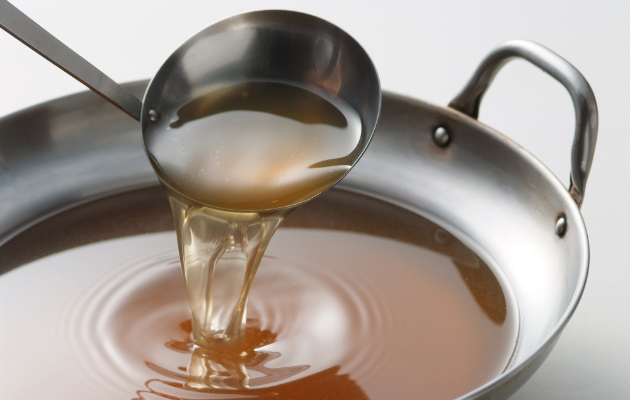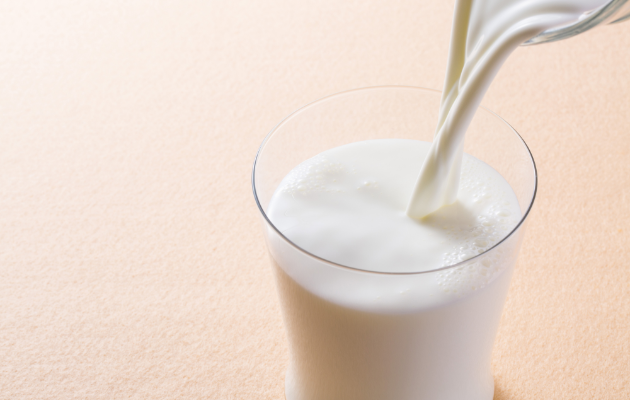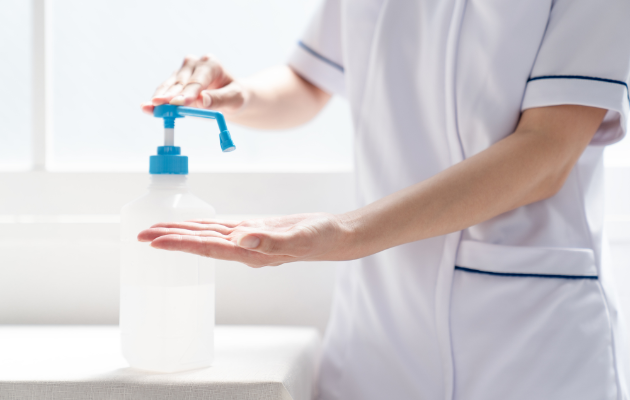What is the CUBITAINER?
In Japan, the CUBITAINER is also known as the "CUBE" or "QB."
Furthermore, it has become a worldwide standard for reagent applications in the hematology field.
The CUBITAINER has been used in a wide range of industries such as the food industries
Liquors

Examples
- Sake
- Chinese Rice Wine
- Shochu & Awamori
- Wine
- Brandy
CUBITAINER is widely used to transport and dispense alcoholic beverages. Compared to glass bottles, it is lightweight, compact and durable. The TAP accessory allows for easy dispensing. For alcohol, we recommend oxygen gas barrier type (B type) to reduce the change in flavor.
Seasoning & Food Additives

Examples
- Sweet Sake
- Fermented Seasoning
- Cooking Sake
- Vinegar
- Soy Sauce
- Fish Sauce
- Steak Sauce
- Soup
- Cooking Oil
- Dressing
- Spice
- Lactic Acid
For contents sensitive to oxidation, we recommend our oxygen gas barrier type (B type).
For contents extremely sensitive to oxidation, Z-tainer is the optimal choice, since it uses the TAP A accessory, which allows dispensing of contents but prevent air intake.
The Z-tainer also does not take up space, with the 20L size being only 30x30x30cm.
These containers are excellent at retaining their shape and therefore stand on their own.
At the end of product life, Z-tainer are highly collapsible and do not take up space at the time of disposal.
Alcoholic liquids can be stored and handled as well, as long as they are not flammable in nature.
Our containers have worldwide popularity because of their lightweight construction and non-rusting properties.
For more sensitive contents, we recommend storing in a dark, cool place and using up the contents in a shorter period of time.
If the contents generate gas, using our PGC CAP will allow de-gassing to reduce total gas in the container.
Food & Drink

Examples
- Milk・Dairy Products
- Mineral Water
- Coffee・Tea・Japanese Tea
- Soup Stock
- Fruit Juice
Conventional containers need to be sterilized before filling dairy products, but CUBITAINER are made in a highly clean environment so no additional work is needed.
Z-tainer is recommended for beverages such as mineral water. Various construction options are available, from high gas barriers to low-odor generating films. Compared to rigid gallon bottles, these containers do not allow inflow of outside air, making them very hygienic in nature. Using our TAP A NEO accessory, because it comes with a handle stopper it can prevent accidental opening of the dispense port during transport. The TRU TAP accessory makes for easy connection to our containers for point-of-use dispensing.
Please be careful when storing at freezing temperatures. If and when you are thawing out contents, we recommend natural thawing at room temperature.
Our containers are very compact and take up no room in the home throughout storage and in the disposal process.
Agriculture

Examples
- Liquid Fertilizer
- Pesticides
Standard type CUBITAINER have a long track record of adoption and worldwide fame because they are lightweight, non-rusting, and easy to dispose of.
Disinfectants

Examples
- Sodium Hypochlorite
- Alcohol Based Sanitizers (Less than 60W%)
- Liquid Hypochlorite
Standard type CUBITAINER have a long track record of adoption and worldwide fame because they are lightweight, non-rusting, and easy to dispose of.
For more sensitive contents, we recommend storing in a dark, cool place and using up the contents in a shorter period of time. If the contents generate gas, using our PGC CAP will allow de-gassing to reduce total gas in the container.
CUBITAINER are often contained in corrugated cardboard as to ensure proper light blocking.
Medical and Pharmaceutical

Examples
- Reagents (hematology)
- Purified Water
- Artificial Dialysate
By design, our products have low elution properties and generate very few particles.
Our U-type Cubitainer is currently used worldwide for hematology-related products.
Electronics

Examples
- Slurries for Semiconductors
- Resist Ink
- Printer Ink
- Plating Liquid
By design, our products have low elution properties and generate very few particles.
Going up to 200-liter-sized drums, the CUBITAINER are used as substitutes for pails or rigid plastic containers.
CUBITAINER are easier to handle and therefore easier to pour from. There is also no washing process involved– they come ready-to-use.
Automobile

Examples
- Window Washer Fluid
- Car Washing Fluid
- AdBlue (Urea Water)
CUBITAINER are used as a substitute for hard plastic containers. With our TAP A attachment, dispensing small measurable amounts is very easy. For pouring into difficult areas, long nozzle attachments are also available.
Because the CUBITAINER generates very little particles, it is widely adopted for AdBlue applications.
Industrial Chemicals

Examples
- Aqueous Adhesives
- Water Based Paints
- Boiler Agents
- Polymer Flocculants
- Developers
- Concrete Admixture
- Cleaning Products (Kitchen, Floors)
- Shampoo, Conditioner
- Wax
- Cleaning Detergents
Our standard CUBITAINER has been a substitute for rigid containers for over 50 years.
We have many attachments available, with wide spouts (45 mm I.D.) for highly viscous contents such as adhesives.
Boiler agents often adopt our 10-liter standard CUBITAINER.
For highly viscous liquids that need to be dispensed in small amounts, such as shampoos and conditioners, the TAP-B attachment offers ultimate control.
Our Z-tainer are much easier to handle and dispose of compared to pails.
Disaster Preparedness & Leisure
(for personal use)

Examples
- Emergency Use Water Supply
- Jugs
CUBITAINER has been widely adopted by local governments and condominium management groups to store water supply for natural disaster preparedness. The compact design makes for efficient storage and disposal after use.
The TAP-A accessory is convenient for dispensing into cups.
5 and 10-liter sizes are popular for leisure use. CUBITAINER are convenient for carrying and dispensing water at outdoor activities such as camping and fishing. After use, CUBITAINER are collapsible and easily folded for compact storage.
FAQ
General questions
| What is CUBITAINER or Bag-In-Box? | It is a liquid container composed of thin and soft plastic enclosed in a cardboard box. CUBITAINER is the first molded-type bag-in-box sold in Japan since 1964. In addition, a gusset-shaped soft bag, Z-tainer, is also available. |
|---|---|
| Is it eco-friendly ? | Compared to a 20-liter plastic rigid container, raw plastic used in the container is approximately 85% less, which contributes to waste reduction. Its collapsibility enables space reduction when transported or stored. Some CUBITAINER are constructed of mono-material for ease of recycling. The cardboard can be easily recycled. More eco-friendly options are in development, such as biomass and recycled material applications. |
| What are the materials of construction? | The container itself is composed of polyethylene (PE) as the main material. Other materials can be used depending on the application. |
| What is it used for? | It can be widely used from liquid food to pharmaceutical ingredients, and general industrial chemicals except some hazardous materials. There are contents that are not suitable so please contact us to confirm. |
| Can it be used for gasoline and kerosene? | No. Please refrain from using CUBITAINER for hazardous materials. |
| Can it be reused? | CUBITAINER are designed for one-time use. Apart from leisure use, we recommend avoiding reuse. |
| Can it hold hot water? | Plastic melts at higher temperatures. CUBITAINER can hold contents that are below 70℃, while plastic TAP accessories can only withstand contents temperatures lower than 40℃. Temperatures higher than this can cause deformation. |
| Can it be boiled? | If the intention is to sterilize, we recommend using water no hotter than 70℃. Be careful, as containers and/or caps may deform with higher temperatures. |
| Can it be used for strong acid and strong alkaline? | The container itself is composed of polyethylene (PE). We have designed it for chemical resistance, but further confirmation may be necessary. |
| Can it be frozen? | We recommend not storing the CUBITAINER in a freezer. The container is designed for liquids. Any solid content such as ice has the risk of penetrating or cutting the container. |
| How is it packed? | CUBITAINER is stored in cardboard boxes with different volumes per size. For instance, there are 100 20-liter plastic CUBITAINER per box. This particular box would be 660×770×610mm (Width×Length×Height). The cardboard boxes that pair with the CUBITAINER are bound together separately to take up less space. |
| Can all accessories be used for all containers? | Screw-type accessories can be used for all containers. However, we would not recommend the PGC caps for the Z-tainer, as this accessory is designed for contents which generate gas. |
| What is the PGC cap? | It is optimized for gas-producing liquids. Gas can easily pass outward but liquid is prevented from leaking out, which reduces swelling of the container. Breathability is ensured by using a water-repellent non-woven sheet. While this sheet is ideal, it must be properly used. If containers are turned on their side or upside down,gas release is obstructed and liquid leakage may occur. Containers using the PGC cap should be kept upright. |
| What is the TAP-B used for? | TAP-B diameter is wider than TAP-A which can be used for highly viscous liquid (such as shampoo and conditioner). With less viscous liquids, we advise using the reqular TAP-A accessory. |
| Can it be transported with TAP attached? | We recommend the TAP-A NEO. It is equipped with a handle stopper to prevent unwanted opening due to vibration during the shipping process. |
| Can the plastic inner container be used without the cardboard? | A cardboard case is required for storage and distribution purposes. The plastic inner container can be used alone only for leisure and emergency situations. |
How to use
| How do I fill it? | In principle: 1.Set up the cardboard box. |
|---|---|
| Can I vacuum headspace air after pouring? | Removing extra air causes the container to wrinkle.Wrinkles can lead to leaks as the container shakes in transport. Please keep the container inflated as much as possible to avoid wrinkles. |
| Do you perform filling? | We do not have filling capability but we can introduce various equipment design for CUBITAINER use (filling machines, box-making machines, sealing machines, cappers, etc) Please contact us for more information. |
| Can the cardboard box be taped closed? | Polypropylene tape can be used. However, if the contents are relatively heavy, we recommend applying tape in an H formation on the bottom of the box. |
| How many boxes can I stack? | Based on our company's standards, the same liquid content stored for 2 months can be stacked up to 4 boxes. However, this also depends on storage conditions. |
| How do I dispense the contents? | First, open the cardboard box by tearing the perforated lines. After exposing the plastic container, pull up on the cap and unscrew to dispense. |
| What are precautions for storing unopened CUBITAINER? | Please be cautious of direct sunlight and moisture. Avoid storing at high temperatures and high humidity. |
| What precautions should be taken for handling CUBITAINER? | 1.Please do not use sharp tools when opening the cardboard box. Cuts may damage the plastic container inside. |
| How tight is the cap? | Our company's reccommended cap tightening torque is approximentaly 2.5 - 3.0 N•m. |
| How do I dispose of a CUBITAINER? | Separate the cardboard box and the inner plastic container, and dispose of them according to local government's regulations. |









